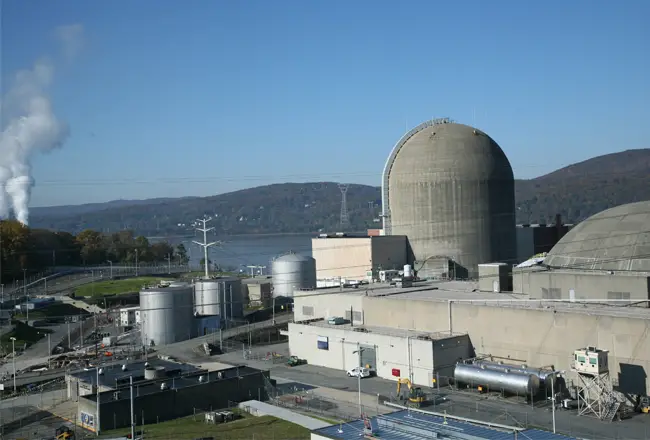Report: After Indian Point, energy grid will need natural gas boost
New York’s energy grid can withstand the loss of Indian Point Energy Center, but it will have to rely on new sources of mostly natural gas-fired generation, according to a report from the state’s independent grid operator.

The New York Independent System Operator released its deactivation assessment on Wednesday for Indian Point’s two nuclear reactors, which are expected to shut down in 2020 and 2021. NYISO said the state’s power grid would remain reliable for the five-year period it studied (2018-23), “if sufficient replacement sources of power are added within the lower Hudson Valley.”
The two reactors at Indian Point in Buchanan produce more than 2,000 megawatts of electricity and provide a quarter of the electricity consumed by New York City and Westchester.
Indian Point owner and operator Entergy Corp. announced in January that it would shut down the two reactors on the site. The shutdown came as part of a legal settlement between Entergy, Gov. Andrew M. Cuomo’s office and Ossining environmental group Riverkeeper following a drawn-out relicensing process.
But Entergy officials said at the time that economic factors actually drove the plant’s closure. Cheap natural gas prices drove down energy costs and cut into the profitability of nuclear generation, officials said, pointing to similar plant shutdowns around the country in recent years.
Related: Left in the dark? Indian Point”™s closing will require a close look at replacement energy sources
Now, according to NYISO’s analysis, an answer to replacing Indian Point’s power may come through three new natural gas-fired plants in the region.
For its best case assessment, which found the grid would meet reliability standards post-Indian Point, NYISO assumed that the grid would add three major generation facilities currently under construction: the 678-megawatt CPV Valley Energy Center in Orange County, the 1,020-megawatt Cricket Valley Energy Center in Dutchess County and a 120-megawatt addition to the Bayonne Energy Center power station in New Jersey.
NYISO analyzed a scenario which removed all three of those plants and found a 100-megawatt need by 2021 and a 600-megawatt need by 2027.
NYISO wrote in the analysis that the “results demonstrate that, without the expected new generation facilities under construction, additional replacement sources of power would be necessary to maintain reliability following deactivation of (Indian Point).”
The analysis concluded that without the three generation facilities cited in the report, the grid’s resource needs “would need to be met by one or more types of solutions, including generation, transmission, energy efficiency and demand response measures.”
A separate report released in February, backed by Riverkeeper and the Natural Resources Defense Council, stated that the grid could maintain reliability by increasing renewable energy production and energy-efficiency measures. That report included the 1,100-megawatt Champlain Hudson Power Express, which hopes to be in service by 2022. The 333-mile transmission line would bring hydropower to the region from Quebec.